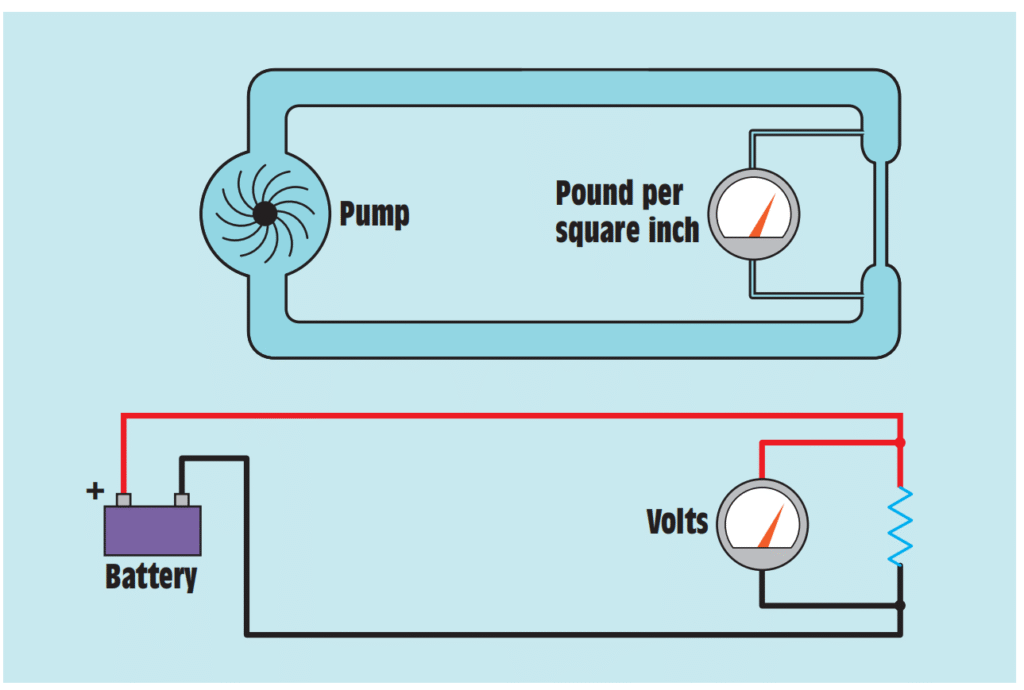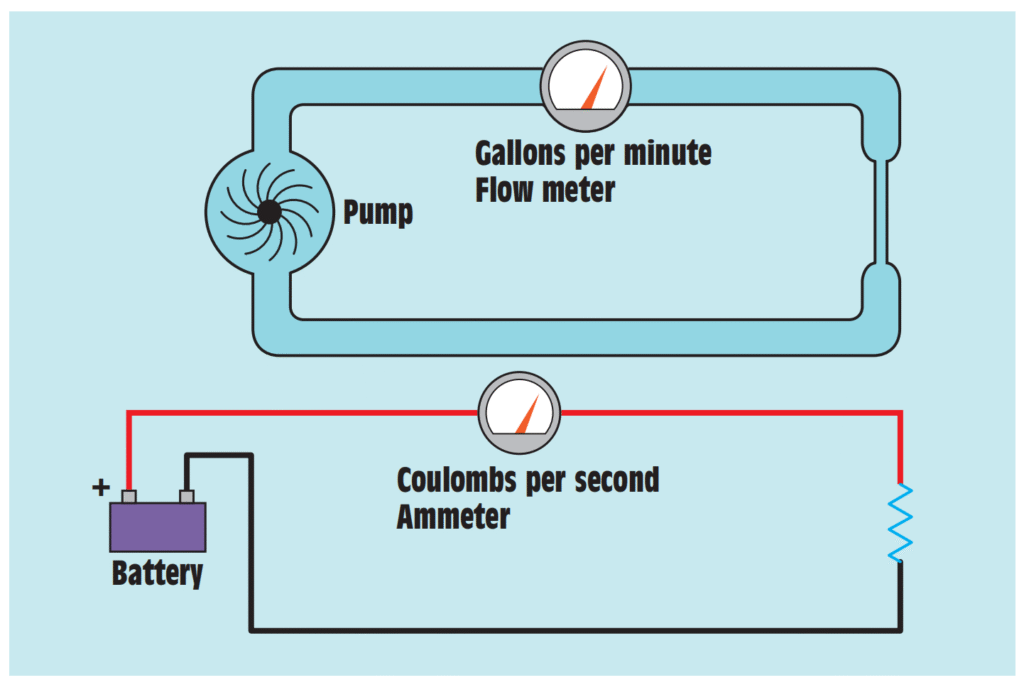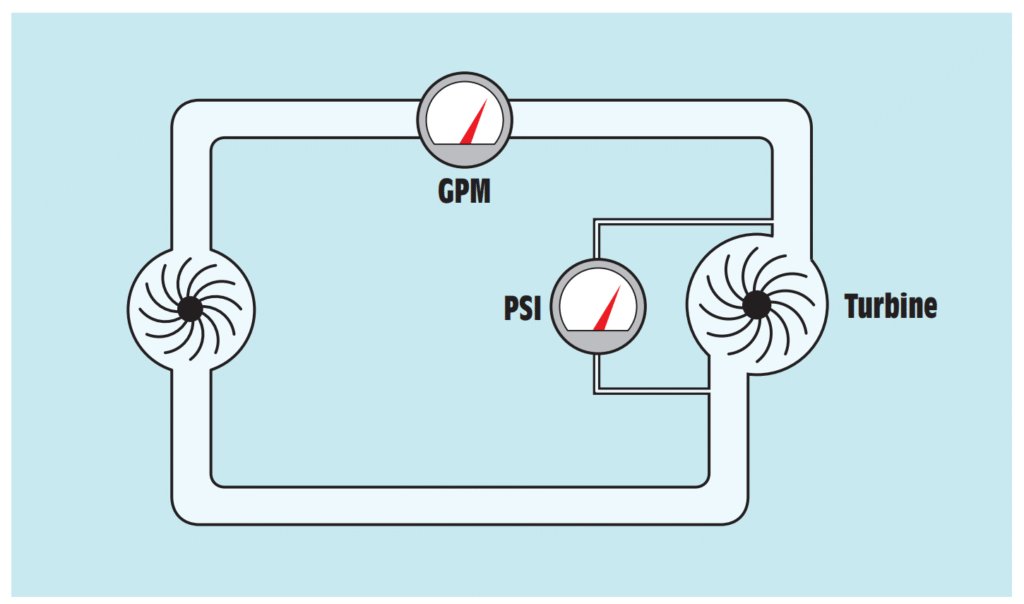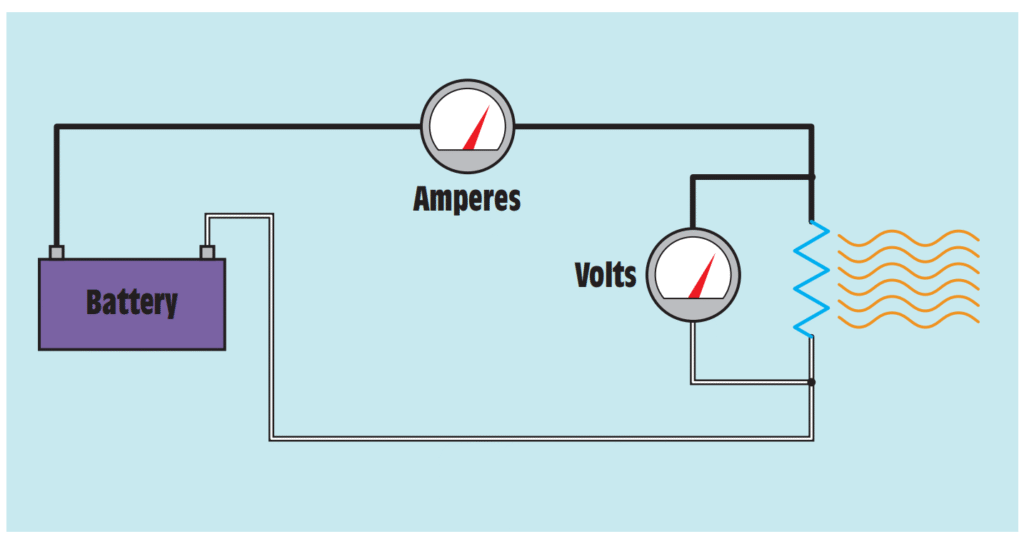Voltage in an electrical circuit is like pressure in a water system. To say that voltage flows through a circuit is like saying that pressure flows through a pipe. Pressure can push water through a pipe, and it is correct to say that water flows through a pipe, but it is not correct to say that pressure flows through a pipe. The same is true for voltage. Voltage pushes current through a wire, but voltage cannot flow through a wire.

The ampere (A) is equal to 1 coulomb per second. Notice that the definition of an ampere involves a quantity measurement, the coulomb, and a time measurement, the second. One ampere of current flows through a wire when 1 coulomb flows past a point in one second. The ampere is a measurement of the amount of electricity that is flowing through a circuit. In a water system, it would be comparable to gallons per minute or gallons per second. The letter I, which stands for intensity of current, and the letter A, which stands for ampere, are both used to represent current flow in algebraic formulas. This text uses the letter I in formulas to represent current.

All electric loads, such as heating elements, lamps, motors, transformers, and so on, are measured in ohms. In a water system, a reducer can be used to control the flow of water; in an electric circuit, a resistor can be used to control the flow of electrons.

To understand watts, return to the example of the water system. Assume that a water pump has a pressure of 120 pounds per square inch (PSI) and causes a flow rate of 1 gallon per second. Now assume that this water is used to drive a turbine, as shown below. The turning force or torque developed by the turbine is proportional to the amount of water flow and the pressure forcing it against the turbine blades. If the pressure is increased and the flow rate remains constant, the water will strike the turbine blades with greater force and the torque will increase. If the pressure remains constant and a greater volume of water is permitted to flow, the turbine blades will be struck by more pounds of water in the same amount of time and torque will again increase. As you can see, the torque developed by the turbine is proportional to both the pressure and the flow rate of the water.


An important concept concerning power in an electric circuit is that before true power, or watts, can exist, there must be some type of energy change or conversion. In other words, electric energy must be changed or converted into some other form of energy before there can be power or watts. It makes no difference whether electric energy is converted into heat energy or mechanical energy; there must be some form of energy conversion before watts can exist.


